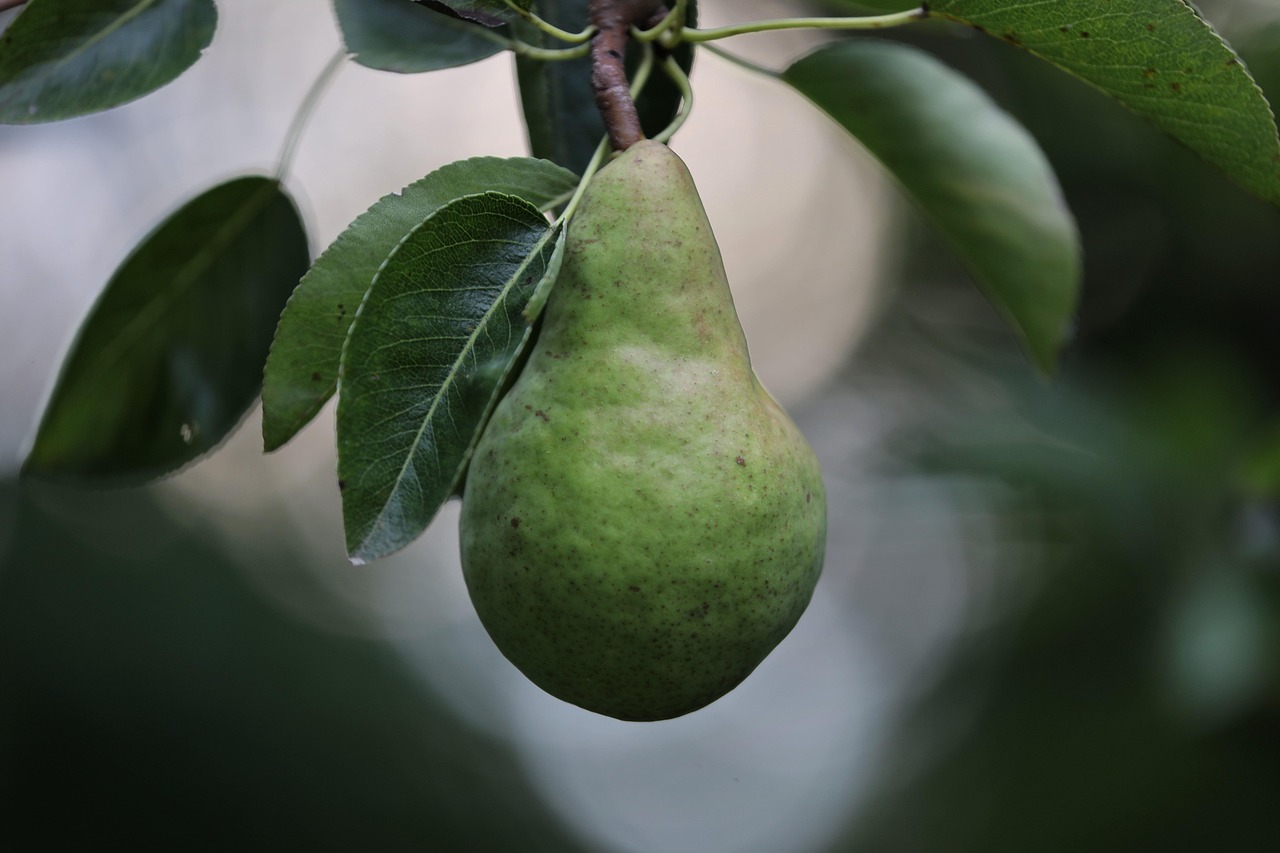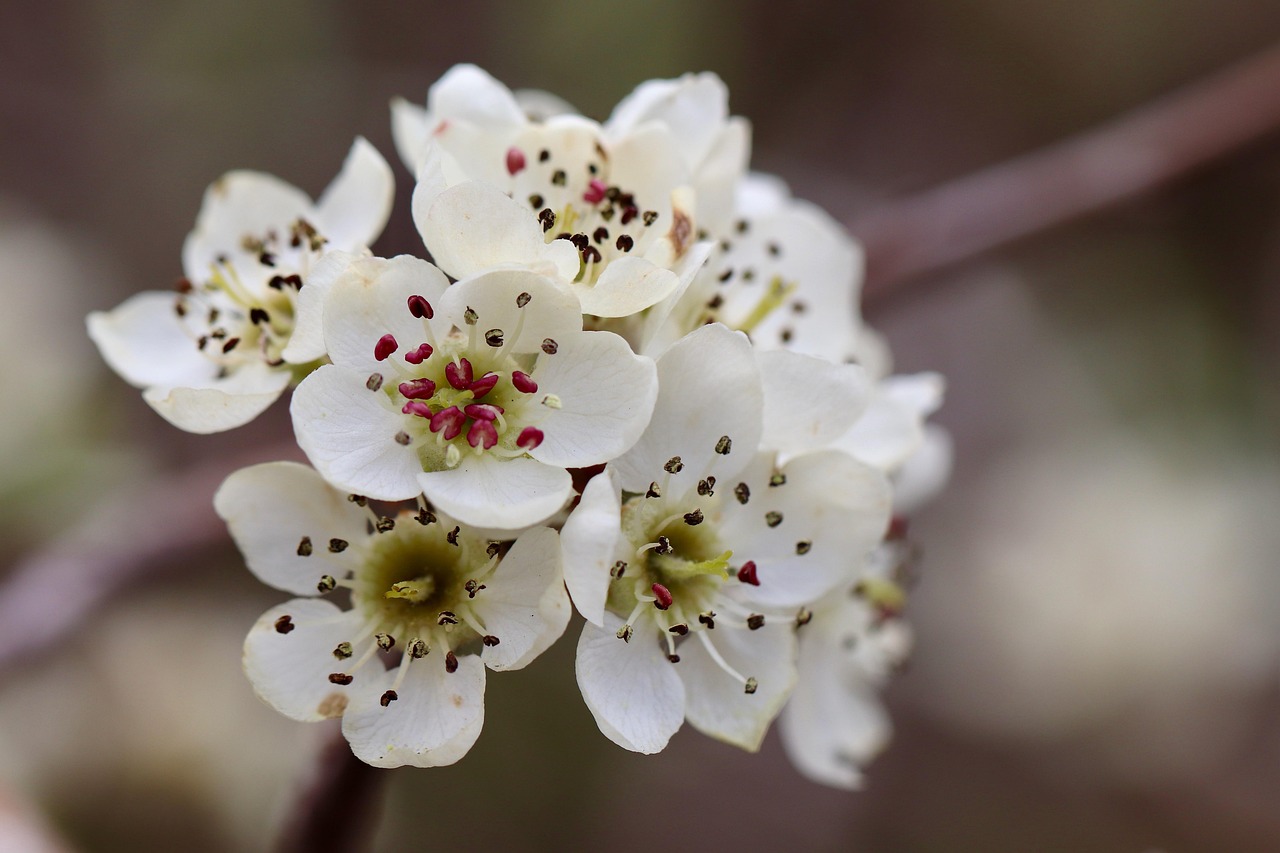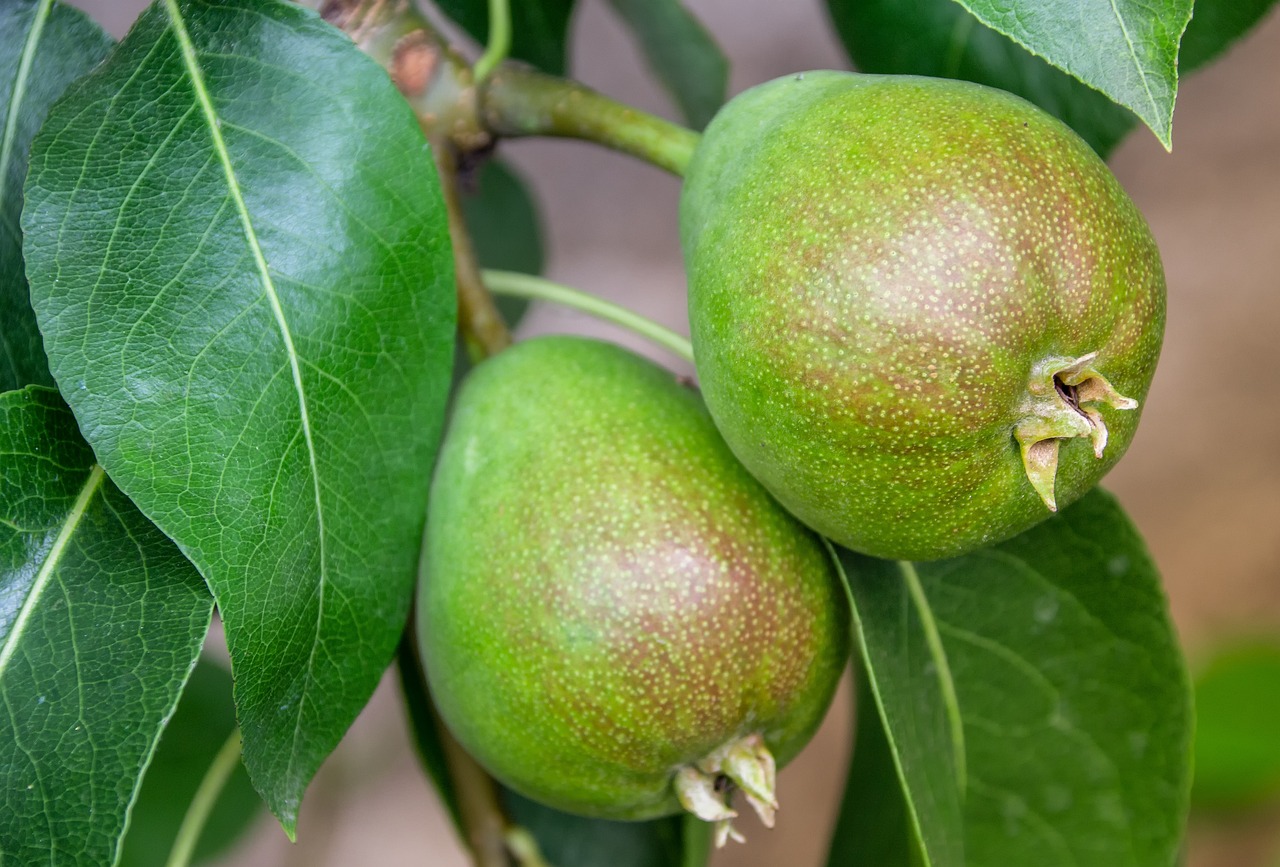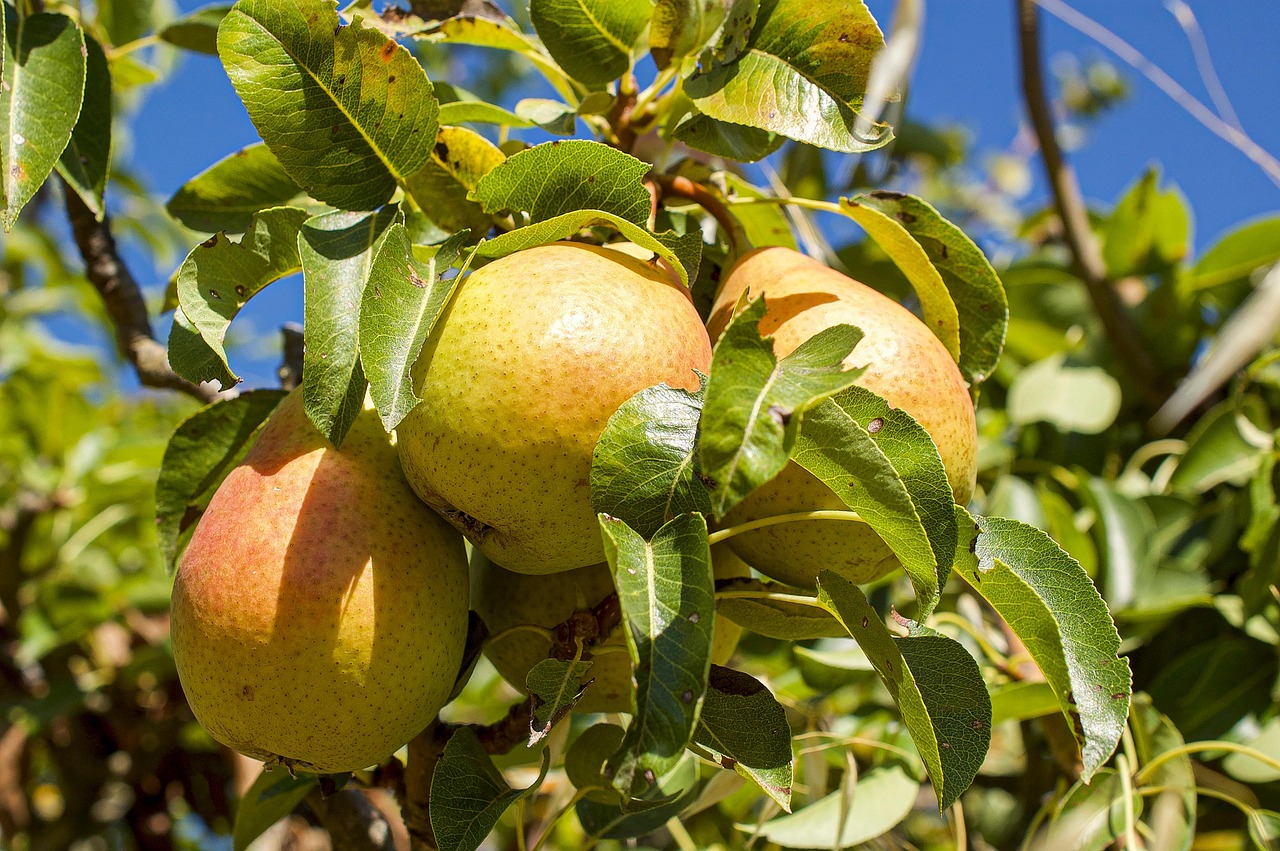The growth rate of ornamental pear trees, particularly for flowering avenues, typically ranges from 1 to 3 feet per year. Factors such as soil quality, climate, and care practices can influence this growth rate significantly.
Ornamental pear trees are popular choices for landscaping due to their stunning spring blossoms and attractive foliage. These trees, particularly varieties like the Bradford pear, are often planted along streets and in parks to create beautiful flowering avenues. Their rapid growth and aesthetic appeal make them ideal for enhancing urban environments.

Understanding the growth rate of ornamental pear trees is crucial for landscape planning and maintenance. These trees reach a mature height of about 30 to 50 feet, depending on the specific variety and growing conditions. When planted in rows as avenue trees, they not only provide shade but also create a visually pleasing corridor during their blooming season.
Factors Influencing Growth Rate
Several factors can affect the growth rate of ornamental pear trees. Below are some key elements that play a significant role:
- Soil Quality: Well-drained, fertile soil promotes healthy growth.
- Water Availability: Consistent moisture is essential, especially during the establishment phase.
- Climate: Ornamental pears thrive in temperate climates with distinct seasons.
- Sunlight: Full sun exposure is ideal for optimal growth.
- Pest and Disease Management: Regular monitoring and treatment can prevent growth disruptions.
Each of these factors can either enhance or hinder the growth of ornamental pear trees. For instance, trees planted in nutrient-rich soil with adequate sunlight and water tend to grow faster than those in less favorable conditions.

Growth Phases of Ornamental Pear Trees
The growth of ornamental pear trees can be divided into several phases:
- Establishment Phase: This phase lasts about 1-3 years. During this time, the tree develops its root system and adapts to its new environment.
- Youth Phase: Lasting from years 4-10, this phase is characterized by rapid vertical growth and increased leaf production.
- Maturity Phase: Starting around year 10, the tree reaches its full height and begins to focus on branching and flowering.
Understanding these phases helps gardeners and landscapers manage expectations regarding the timeline for achieving a fully developed flowering avenue. Proper care during the establishment phase is crucial to ensure a strong foundation for future growth.
Common Varieties Used for Flowering Avenues
Several varieties of ornamental pear trees are commonly used for creating flowering avenues. Each variety has its unique characteristics:

| Variety | Mature Height | Bloom Color | Growth Rate |
|---|---|---|---|
| Bradford Pear | 30-50 feet | White | Fast |
| Cleveland Select Pear | 30-40 feet | White | Moderate to Fast |
| Chanticleer Pear | 40 feet | White | Fast |
The Bradford pear is one of the most well-known varieties due to its rapid growth and beautiful flowers. However, it is essential to consider potential weaknesses, such as susceptibility to splitting under heavy winds or ice loads. Other varieties like Cleveland Select and Chanticleer offer similar aesthetic benefits with improved structural integrity.
In conclusion, ornamental pear trees are excellent choices for flowering avenues due to their impressive growth rates and visual appeal. Through proper care and consideration of environmental factors, these trees can thrive and enhance landscapes significantly.
Care and Maintenance of Ornamental Pear Trees
To maximize the growth rate and health of ornamental pear trees, proper care and maintenance are essential. These trees require attention to several factors, including watering, pruning, and fertilization. A little effort can lead to a thriving avenue of beautiful blooms.

Watering Practices
Watering is a critical component of tree care, especially during the establishment phase. Here are some best practices:
- Deep Watering: Ensure that water penetrates deeply into the soil. This encourages roots to grow deeper and become more resilient.
- Frequency: Newly planted trees should be watered weekly, especially during dry spells. Established trees may require less frequent watering.
- Mulching: Apply a layer of mulch around the base of the tree. This retains moisture and regulates soil temperature.
Monitoring soil moisture levels can help prevent overwatering or underwatering. Using a soil moisture meter can be beneficial in determining when to water.
Pruning Techniques
Pruning is essential for shaping the tree, removing dead or diseased branches, and promoting healthy growth. Here are some important pruning guidelines:
- Timing: The best time to prune ornamental pear trees is during late winter or early spring before new growth begins.
- Tools: Use sharp, clean tools to make precise cuts and reduce the risk of infection.
- Techniques: Focus on removing crossing branches, suckers, and any dead or damaged wood.
Regular pruning not only enhances the tree’s appearance but also improves air circulation, which is vital for overall health.
Fertilization Guidelines
Fertilization supports healthy growth and flowering. Here are some tips for fertilizing ornamental pear trees:
- Soil Testing: Conduct a soil test to determine nutrient levels. This ensures that you provide the right type and amount of fertilizer.
- Type of Fertilizer: Use a balanced fertilizer with equal parts nitrogen, phosphorus, and potassium. A slow-release formula is often recommended.
- Application Timing: Fertilize in early spring as new growth begins. This timing helps to provide nutrients when the tree needs them most.
Over-fertilizing can lead to excessive foliage growth at the expense of flowers. Therefore, follow recommended guidelines based on soil tests.
Pest and Disease Management
Ornamental pear trees can be susceptible to various pests and diseases. Regular monitoring and timely intervention are crucial for maintaining tree health. Here are common issues to look out for:
| Pest/Disease | Description | Treatment |
|---|---|---|
| Fire Blight | Bacterial disease causing wilting and blackening of flowers and stems. | Prune affected areas and apply appropriate fungicides. |
| Scale Insects | Tiny insects that suck sap from leaves and branches, weakening the tree. | Use insecticidal soap or horticultural oil for control. |
| Aphids | Small green or black insects that can cause leaf distortion. | Introduce beneficial insects like ladybugs or use insecticidal soap. |
Early detection is key in managing these pests and diseases. Regular inspections can help identify issues before they become severe problems.
The Role of Environmental Conditions
The environment plays a significant role in the growth rate of ornamental pear trees. Key environmental conditions include:
- Temperature: Ornamental pears thrive in USDA hardiness zones 5-9. Extreme temperatures can affect growth rates.
- Sunlight Exposure: Full sunlight is essential for optimal growth. Trees planted in shaded areas may experience slower growth rates.
- Wind Exposure: Strong winds can damage young trees. Planting in sheltered locations may help protect them.
Understanding these environmental factors can aid in selecting the best planting locations and care strategies for ornamental pear trees, ultimately enhancing their growth rates and visual appeal along flowering avenues.
Choosing the Right Location for Planting
Selecting the right location for planting ornamental pear trees is crucial for their growth and overall health. A well-chosen site can enhance their growth rate and ensure they thrive, especially when planted as part of a flowering avenue.
Soil Considerations
The type of soil greatly influences the growth rate of ornamental pear trees. Here are some key soil factors to consider:
- Drainage: Well-drained soil is essential. Poor drainage can lead to root rot and other issues.
- Soil pH: Ornamental pears prefer slightly acidic to neutral soil (pH 6.0 to 7.0). Testing the soil pH can help determine if amendments are necessary.
- Nutrient Content: Fertile soil enriched with organic matter supports faster growth. Consider adding compost or well-rotted manure to improve nutrient levels.
A soil test before planting can provide valuable information about nutrient levels and pH, guiding appropriate amendments for optimal growth.
Space Requirements
Understanding the space requirements of ornamental pear trees is vital for their long-term health and aesthetic appeal. Consider the following:
- Spacing: When planting in rows or clusters, ensure adequate spacing between trees. A distance of 20 to 30 feet between each tree allows for proper airflow and reduces competition for nutrients.
- Height Considerations: Keep in mind the mature height of the tree to avoid interference with overhead utilities or structures.
- Root Space: Allow sufficient space for root expansion. Crowded roots can lead to stunted growth and overall tree health decline.
Proper spacing not only promotes healthy growth but also enhances the visual impact of flowering avenues, allowing each tree to be appreciated fully.
Seasonal Care Practices
Seasonal changes bring different care requirements for ornamental pear trees. Adapting care strategies throughout the year can lead to better health and growth rates.
Spring Care
As temperatures rise and growth begins, spring is a critical time for care:
- Fertilization: Apply a balanced fertilizer to provide nutrients needed for vigorous growth.
- Watering: Begin regular watering schedules, ensuring moisture levels are adequate as new leaves and flowers develop.
- Pruning: Conduct any necessary pruning to remove dead or diseased wood and shape the tree.
Summer Care
During the summer months, focus on maintaining tree health:
- Water Management: Monitor soil moisture closely, especially during hot spells. Deep watering may be necessary to encourage deep root growth.
- Pest Monitoring: Keep an eye out for pests and treat any infestations promptly to prevent damage.
- Mulching: Maintain mulch layers to conserve moisture and suppress weeds.
Fall Care
As autumn approaches, preparation for winter becomes essential:
- Watering Schedule: Reduce watering as temperatures drop, but ensure trees are adequately hydrated before winter dormancy.
- Leaf Cleanup: Rake fallen leaves to prevent diseases that thrive in debris.
- Mulching: Add a fresh layer of mulch around the base of the tree to protect roots from cold temperatures.
Winter Care
While ornamental pear trees are dormant, they still require attention:
- Protection from Frost: In areas prone to severe frost, consider wrapping young trees with burlap or using tree guards.
- Pest Control: Inspect for any pest infestations that could overwinter on the tree.
- Planning for Spring: Evaluate tree health and prepare for pruning and fertilization as spring approaches.
Caring for ornamental pear trees throughout the seasons ensures they remain healthy and vibrant, ultimately contributing to their growth rate and visual appeal along flowering avenues.
Common Challenges and Solutions
While ornamental pear trees offer many benefits, they also come with challenges that can affect their growth rate and overall health. Understanding these challenges and implementing effective solutions is crucial for successful cultivation.
Environmental Stressors
Environmental stressors such as drought, excessive heat, or cold snaps can impact growth. Here are some strategies to mitigate these effects:
- Water Conservation: During dry spells, use drip irrigation systems to target the root zone directly, minimizing water loss through evaporation.
- Shade Provision: In extremely hot conditions, consider providing temporary shade with cloth or other materials to protect young trees from sunburn.
- Winter Protection: Use mulch and wrap young trees to shield them from harsh winter conditions.
Pest and Disease Management
As previously mentioned, pests and diseases can pose serious threats to ornamental pear trees. Here are additional management strategies:
- Regular Monitoring: Inspect trees frequently for early signs of pests or disease, enabling timely intervention.
- Integrated Pest Management (IPM): Utilize a combination of biological, cultural, and chemical control methods to manage pests sustainably.
- Healthy Practices: Promote tree health through proper watering, fertilization, and pruning techniques, making them less susceptible to infestations.
Enhancing Aesthetic Appeal
Ornamental pear trees are often chosen for their beauty and ability to enhance landscapes. To maximize their aesthetic impact, consider the following:
- Planting Design: Create visual interest by varying planting distances or combining different tree varieties for a dynamic flowering avenue.
- Seasonal Color: Consider planting understorey plants that bloom at different times to complement the ornamental pear’s spring flowers.
- Lighting: Use landscape lighting to highlight the trees during the evening, enhancing their visual appeal and creating a stunning night-time effect.
Strategically planning the layout and companion planting can significantly enhance the overall beauty of flowering avenues featuring ornamental pear trees.
Final Thoughts
Ornamental pear trees provide a unique combination of rapid growth, stunning blooms, and structural beauty that can enhance any landscape. Their ability to thrive in various conditions makes them a favorite choice for flowering avenues. However, ensuring their success requires careful attention to planting location, seasonal care practices, and pest management strategies.
By understanding the specific needs of these trees — from soil requirements to seasonal care — gardeners and landscapers can create vibrant displays that flourish year after year. Additionally, planning for potential challenges and enhancing aesthetic appeal will ensure that ornamental pear trees remain a cherished feature in urban and suburban landscapes alike.
In summary, with proper care and consideration of environmental factors, ornamental pear trees can significantly contribute to the beauty and functionality of flowering avenues. Their impressive growth rates and showy blossoms make them an excellent choice for those looking to create stunning natural corridors in their communities.
